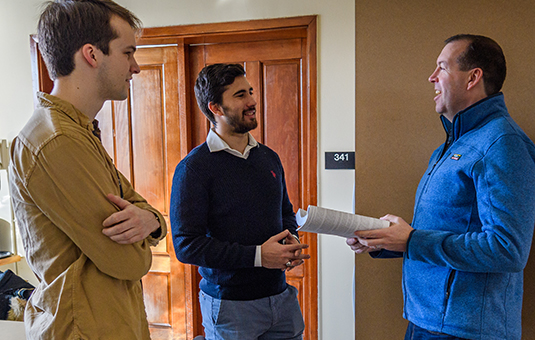Computer Science
Adaptive sliding menubars make existing software more accessible to people with severe motion impairments
Document Type
Article
Abstract
The graphical user interfaces of popular software are often inaccessible to people with severe motion impairments, who cannot use the traditional keyboard and mouse, and require an alternative input device. Reaching for buttons and selecting menu items, in particular, can be difficult for nonverbal individuals with quadriplegia, who control the mousepointer with head motion via a mouse-replacement system. This paper proposes interaction techniques that can be used with mouse-replacement systems and enable the creation of accessible graphical user interfaces. To illustrate these techniques, the paper presents an image editing application, named Camera Canvas, that uses a sliding toolbar as its universal menu controller. The parameters of the toolbar automatically adapt to the movement abilities of the specific user. Individuals with and without disabilities and of a variety of ages were observed using Camera Canvas. It was found that the developed techniques worked across many different movement abilities and experience levels. Then, it was investigated how such techniques could be used to "retrofit" existing Windows applications with new graphical user interfaces. A tool called Menu Controller was created that can automatically re-render the menus of some existing applications into adaptive sliding toolbars. Menu Controller enables users of mouse-replacement systems to select menu entries that were otherwise inaccessible to them. © 2013 The Author(s).
Publication Title
Universal Access in the Information Society
Publication Date
2014
Volume
13
Issue
1
First Page
5
Last Page
22
ISSN
1615-5289
DOI
10.1007/s10209-013-0295-2
Keywords
cerebral palsy, user study, menu item, mouse pointer, camera canvas
Repository Citation
Kwan, Christopher W.; Paquette, Isaac; Magee, John J.; and Betke, Margrit, "Adaptive sliding menubars make existing software more accessible to people with severe motion impairments" (2014). Computer Science. 34.
https://commons.clarku.edu/faculty_computer_sciences/34
APA Citation
Kwan, C. W., Paquette, I., Magee, J. J., & Betke, M. (2014). Adaptive sliding menubars make existing software more accessible to people with severe motion impairments. Universal Access in the Information Society, 13, 5-22.



